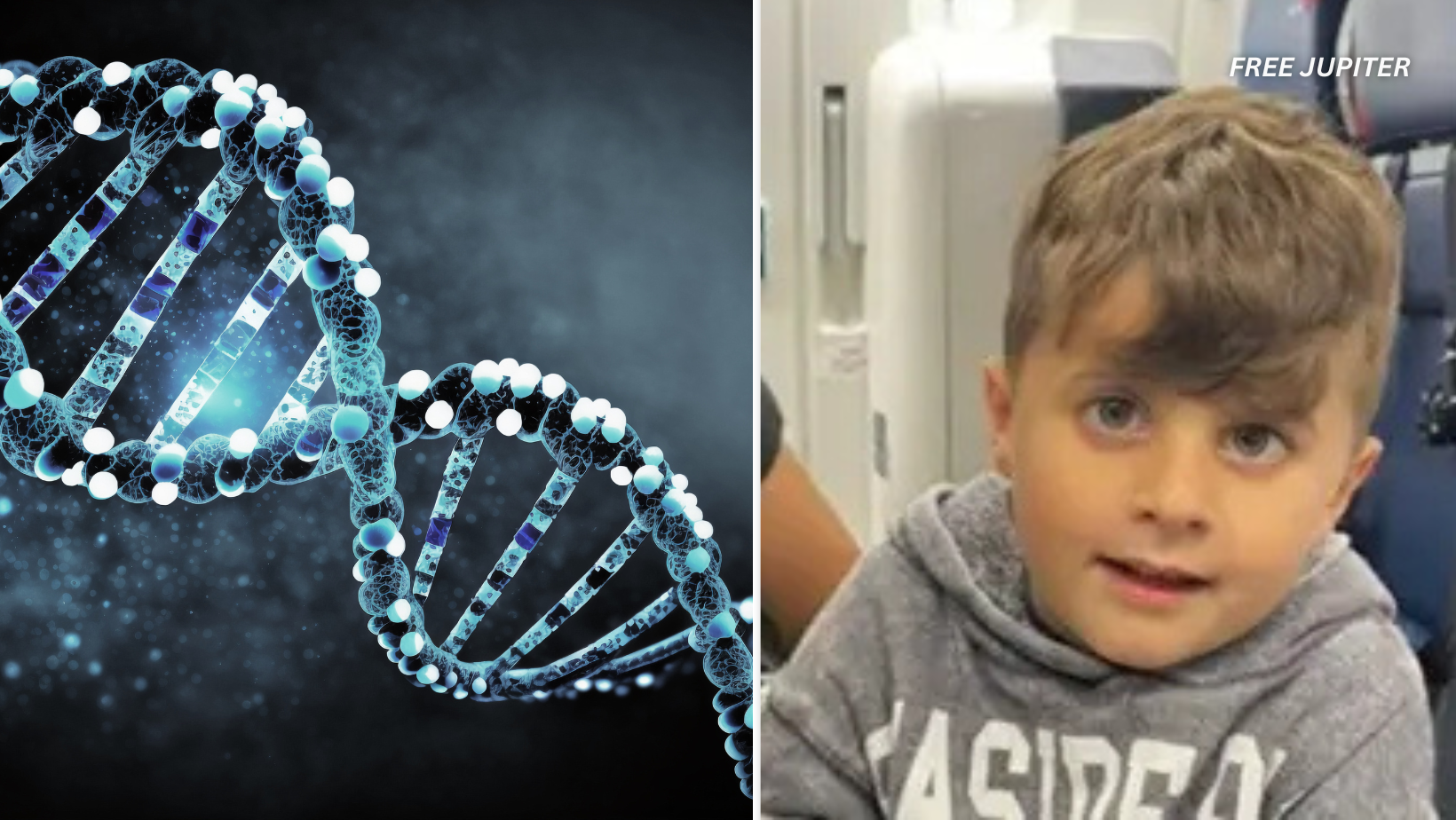In a remarkable medical breakthrough, a young boy from Connecticut named Jace is among four children born with profound vision loss who have experienced transformative improvements in their eyesight following an innovative gene therapy trial. This pioneering treatment marks a significant advance in the fight against severe childhood blindness caused by rare genetic retinal diseases such as Leber congenital amaurosis (LCA).
Understanding Leber Congenital Amaurosis: The Genetic Roots of Early Blindness
Leber congenital amaurosis is a rare inherited retinal disorder that causes severe vision impairment or total blindness from birth or early infancy. It arises from mutations in genes responsible for the development and function of the retina—the light-sensitive tissue lining the back of the eye. One such gene is AIPL1, which was identified as the cause of Jace’s condition.
The retina contains photoreceptor cells—rods and cones—that convert light into electrical signals sent to the brain. Mutations in genes like AIPL1 disrupt this process, leading to retinal degeneration and loss of vision. Symptoms typically include poor visual responsiveness in infancy, involuntary eye movements (nystagmus), and severely reduced or absent pupillary responses. Historically, LCA has been considered untreatable, resulting in progressive and irreversible vision loss.
Read more: Insomnia Isn’t Just About Sleep, Your Personality Plays a Huge Role
Early Signs and the Diagnostic Journey
Jace’s parents first noticed something was amiss when their son was just two months old. At this age, babies usually begin to focus on faces and respond with smiles, but Jace was not exhibiting these behaviors. DJ, his mother, described the concern: “Around eight weeks old, when babies should start looking at you and smiling, Jace wasn’t doing that yet.”
Determined to find answers, DJ spent months researching and consulting various specialists. After extensive testing, Jace was diagnosed with LCA caused by a mutation in the AIPL1 gene—a particularly aggressive form of the disease. The diagnosis was a shock but also brought clarity. Brendan, Jace’s father, reflected, “It was a shock. You never expect it to happen to you, but there was also relief in finally understanding what was going on because it gave us a way to move forward.”
The Promise of Gene Therapy: A Revolutionary Approach
Gene therapy offers a novel approach to treating inherited retinal diseases by addressing the root cause—the faulty gene. This treatment involves delivering a healthy copy of the defective gene directly into retinal cells using a harmless viral vector, typically an adeno-associated virus (AAV). The vector is injected into the subretinal space, beneath the retina, allowing the healthy gene to be taken up by retinal cells and restore their function.
This method aims to correct the genetic defect rather than merely managing symptoms. Early gene therapy research focused on the RPE65 gene, another common cause of LCA, and demonstrated safety and efficacy in both animal models and human trials. Patients treated for RPE65 mutations experienced improved light sensitivity and visual function lasting months to years after treatment, paving the way for therapies targeting other genes like AIPL1.
Jace’s Treatment: A Life-Changing Procedure
After being connected with Michel Michaelides, a consultant eye surgeon at Moorfields Eye Hospital in London and professor at the UCL Institute of Ophthalmology, Jace was selected for an experimental gene therapy trial targeting his specific genetic mutation. The procedure was performed when Jace was two years old and involved injecting healthy copies of the AIPL1 gene into one eye to reduce potential risks.
The surgery was brief and straightforward. Within weeks, Jace began responding to visual stimuli such as television and mobile phones. Over the following months, his ability to recognize objects and navigate his environment improved significantly. DJ shared, “He started to respond to the TV and phone within a few weeks of surgery and, within six months, could recognize and name his favorite cars from several meters away.”
Beyond vision, Jace’s sleep patterns, often disrupted in children with vision loss, improved, making bedtime a more pleasant experience for the family. Brendan described the results as “nothing short of spectacular.”
Read more: People Shocked by the Unexpected Degree Held by The Newly Elected Pope Leo
Clinical Trial Outcomes and Scientific Significance
Jace’s case is part of a larger clinical trial involving four children with severe childhood blindness caused by different genetic mutations. The results, published in The Lancet, highlight the transformative potential of gene therapy for these conditions.
The trial demonstrated that early intervention with gene therapy can lead to substantial improvements in visual function, including better light perception, object recognition, and mobility. Importantly, the treatment was well-tolerated with no serious adverse effects reported.
These findings build on previous successes treating RPE65 – related LCA and represent a major step forward in extending gene therapy to other genetic forms of childhood blindness. The trial also underscores the importance of early diagnosis and treatment to maximize outcomes.
Expanding Horizons: The Future of Gene Therapy in Ophthalmology
The success of this gene therapy trial is fueling ongoing research to refine techniques, broaden the range of treatable mutations, and improve delivery methods. Scientists are exploring the potential benefits of bilateral treatment (both eyes) and repeated dosing to enhance and sustain visual improvements.
Advances in retinal imaging and electrophysiological testing are helping clinicians monitor treatment effects more precisely, enabling personalized care. Additionally, researchers are investigating gene editing technologies, such as CRISPR, as complementary or alternative approaches to correct genetic defects in retinal diseases.
Efforts are also underway to make gene therapy more accessible globally. Challenges include high treatment costs, the need for specialized surgical expertise, and ensuring early genetic diagnosis through newborn screening programs.
Broader Implications for Patients and Families
For families like Jace’s, gene therapy offers a new lease on life. Improved vision can dramatically enhance a child’s development, education, and social interactions. It also alleviates the emotional and practical burdens faced by caregivers.
Jace’s parents emphasize the profound impact the treatment has had on their family’s quality of life. DJ noted, “We wanted to give him everything we could to help him successfully navigate the world.” Brendan added, “The results are life-changing, and we feel incredibly fortunate.”
Read more:Don’t Hit The Snooze Button When Waking Up Each Morning: Research
Conclusion: A New Era in Treating Childhood Blindness
Jace’s journey from diagnosis to restored vision exemplifies the extraordinary progress in gene therapy for inherited retinal diseases. This breakthrough not only transforms individual lives but also heralds a new era in genetic medicine.
As research advances and treatments become more widely available, gene therapy holds the promise of turning what was once considered irreversible blindness into a treatable condition. The future is brighter for children born with severe vision loss, offering hope and renewed possibilities for families worldwide.










